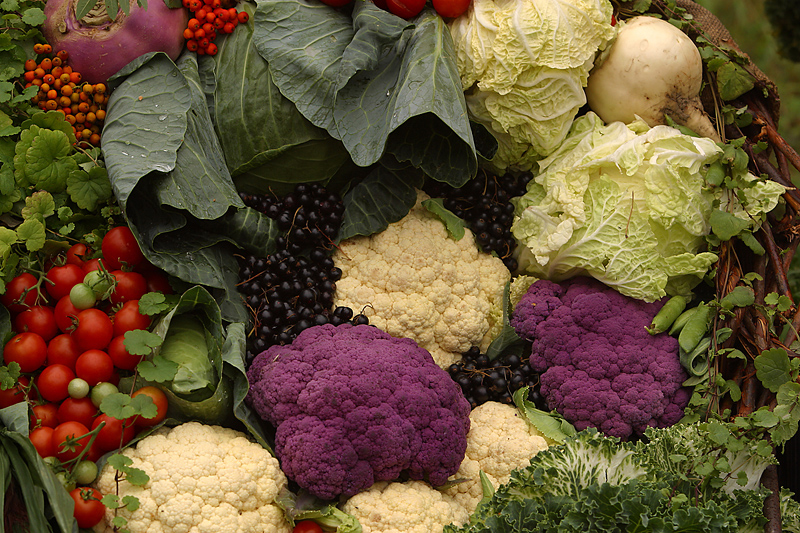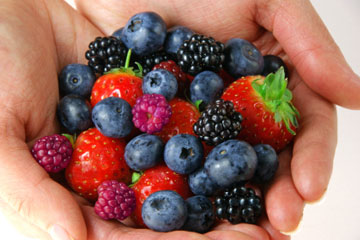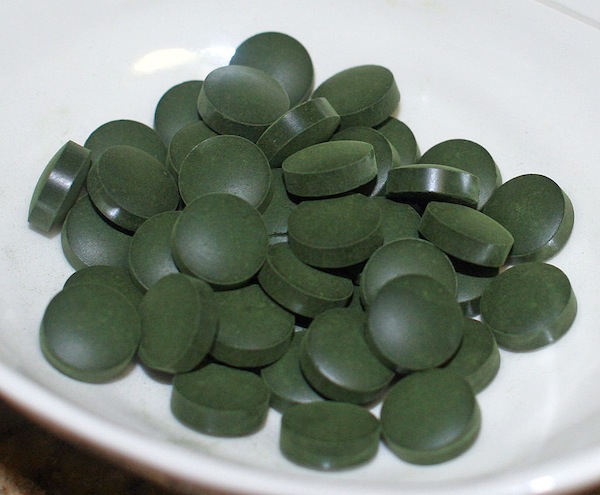Stay Informed
Popular Articles
- Hiatal Hernia: Hidden Cause of Chronic Illness
- Small Intestinal Bacterial Overgrowth (SIBO)
- Applied Lymphology: Unlocking the Secret to Pain Relief
- An Introduction to Constitutional Iridology
- The Low Down on Liver Detoxification
- An Energetic and Emotional Approach to Cancer
- Fat Facts
- Marrow in the Bones
- Blood Type and Nutrition
- Cardiac Herbs: Beyond Hawthorn
Quick Search
The School of Modern Herbal Medicine




Reversing Metabolic Syndrome to Avoid Diabetes
- 8/19/2015
- Categorized in: Specific Health Problems
 Some 25 million Americans have a condition that dramatically increases their risk of developing degenerative diseases like diabetes, heart disease and stroke. It is a contributing factor in high blood pressure and a major cause of obesity. The problem goes by many names: metabolic syndrome, syndrome X, hyperinsulinemia, cardiometabolic syndrome, and insulin resistance. Whatever name you give it, you may have this problem if you match three or more of the following criteria:
Some 25 million Americans have a condition that dramatically increases their risk of developing degenerative diseases like diabetes, heart disease and stroke. It is a contributing factor in high blood pressure and a major cause of obesity. The problem goes by many names: metabolic syndrome, syndrome X, hyperinsulinemia, cardiometabolic syndrome, and insulin resistance. Whatever name you give it, you may have this problem if you match three or more of the following criteria:
- Abdominal Obesity: Waist circumference greater than 40” in men or 35” in women
- High Triglycerides: Blood triglycerides higher than 150 mg/dL
- Low HDL Cholesterol: HDL less than 40 mg/dL in men or less than 50 mg/dL in women
- High Blood Pressure: Blood pressure higher than 130/85
- High Fasting Glucose: Blood glucose greater than 100 mg/dL
If you have metabolic syndrome, you can improve your health and potentially prolong your life by utilizing the information in this article. If you don’t personally match these criteria, chances are that someone you know does, so please share this information with them.
Understanding Metabolic Syndrome
 Metabolic syndrome involves cellular resistance to insulin, a peptide hormone that regulates carbohydrate and fat metabolism and enables cells to utilize glucose. If your cells start to become resistant to the effects of insulin, the level of insulin in your blood will rise, a condition known as hyperinsulinemia. Insulin resistance means that glucose can’t get into the cells, which causes a growing cascade of imbalances in your body.
Metabolic syndrome involves cellular resistance to insulin, a peptide hormone that regulates carbohydrate and fat metabolism and enables cells to utilize glucose. If your cells start to become resistant to the effects of insulin, the level of insulin in your blood will rise, a condition known as hyperinsulinemia. Insulin resistance means that glucose can’t get into the cells, which causes a growing cascade of imbalances in your body.
Initially, the body starts storing the excess glucose as fat, causing you to gain weight around your mid-section. Not everyone with insulin resistance gains weight and not everyone who is overweight is insulin resistant, but in the majority of people these two conditions are linked.
Having insulin resistance greatly increases your risk of high blood pressure, arteriosclerosis, heart attack, and stroke. In fact, hyperinsulinemia is a much more serious risk factor for cardiovascular disease than high cholesterol. Furthermore, as the insulin resistance gets worse, it eventually leads to the development of type 2 diabetes. Diabetes further increases your risk of cardiovascular disease and is the leading cause of blindness and amputations.
High levels of insulin cause other problems as well, such as increasing inflammation, increasing water retention, and depressing neurotransmitters in the brain, which contribute to depression. Insulin resistance may also be a factor in polycystic Alzheimer’s disease, ovary disease, sleep apnea, non-alcoholic fatty liver disease, and even cancer.
Clearly, if you have signs of hyperinsulinemia, or metabolic syndrome, it’s time to do something about it. By starting now and doing the right things, you can reverse your insulin resistance, improve your health, and reduce your risk of developing degenerative diseases.
Overcoming Metabolic Syndrome
If you have metabolic syndrome, you can overcome it by making changes in your diet and lifestyle and taking appropriate supplements. Here are the key steps involved.
Make Good Food Choices
Since insulin resistance is caused by diet, it makes sense that the first thing you need to do to overcome it is change the way you eat. Start by reducing the amount of sugar you put into your bloodstream through your meals. Remember that starches are converted to sugars in your digestive tract, so you'll want to eliminate sugary and starchy foods from your diet. Basically, you want your diet to consist primarily of vegetables, with some quality protein and fresh fruit.
Start by filling your plate 2/3 full of vegetables when you have a meal. Use fresh vegetables wherever possible, with frozen vegetables being a backup option. Select vegetables that are low in starches, such as squashes, zucchini, green beans, peppers, tomatoes, lettuce, broccoli, cauliflower, Swiss chard and kale. For a while it's best to avoid starchy vegetables like potatoes until your blood sugar and insulin levels stabilize.
 Next, select some high quality proteins to go with your vegetables. These can include poultry, eggs, fish and red meat. Ideally, you want to look for grass-fed or pastured animals, preferably organic. Have a 3-4 ounce portion of protein with your vegetables.
Next, select some high quality proteins to go with your vegetables. These can include poultry, eggs, fish and red meat. Ideally, you want to look for grass-fed or pastured animals, preferably organic. Have a 3-4 ounce portion of protein with your vegetables.
Third, you can also eat whole fruits. Avoid fruit juices, as they are too sugary. If you are obese, it’s best to avoid sugary fruits and stick with low glycemic fruits, which include all types of berries, apples, cherries and apricots.
It’s also important to get some good fats in your diet. Foods like avocado, nuts and fish can supply the kinds of healthy fat your body needs to function well. You should also replace margarine, shortening and vegetable oils with healthy fats like butter, coconut oil and olive oil. If necessary, take an Omega-3 EPA supplement to supply essential fatty acids and reduce insulin resistance.

Avoid all simple sugars, including high fructose corn syrup, refined sugar, raw sugar, and brown sugar. If you need to sweeten a particular food or recipe, try using Stevia, xylitol, or a more complex sugar such as raw, unfiltered honey, barley malt, brown rice syrup, date sugar, maple syrup, or molasses. Complex sugars are more slowly absorbed by the body and don’t throw your system out of whack when used in moderation. Also avoid all processed grain products, especially white flour and white rice. Some people can tolerate moderate amounts of whole grains, but if you really want to decrease insulin resistance and lose weight, avoid all grain products for at least two to three months until your blood sugar becomes more stable, then re-introduce whole grains (preferably gluten-free grains like rice, quinoa and millet) in moderate amounts.
Get Physically Active
A 2006 study published in the International Journal of Sport Nutrition and Exercise Metabolism suggests that combining resistance training (using weight machines, free weights, or calisthenics) with cardiovascular (aerobic) exercise is ideal for getting rid of abdominal fat – a key indicator of insulin resistance. Abdominal fat is the deepest layer of belly fat (the fat you can’t see or grab). These “visceral” fat cells produce hormones that contribute to the development of diabetes, obesity and heart disease. The risk increases because they are located near other organs in the abdominal cavity.
Resistance exercise trains the muscles to take up glucose without the need for insulin, thereby decreasing insulin requirements. It also stimulates the development of small proteins in muscle cells, which in turn enhance your muscles’ ability to generate force. Exercise reduces stress and insulin levels, which reduces cortisol production and fat deposits. A program consisting of three workouts per week will help correct metabolic syndrome and reduce your risk of developing degenerative diseases.
The key to successful exercising is consistency. Make it a priority in your life and schedule the time. Thirty minutes is all that is needed. If you’ve been sedentary for a long period, the first week will be tough, but hang in there! As you work through fatigue, pain and shortness of breath, exercising will gradually become easier and you’ll feel much better.
Reduce Stress Levels
Stress plays a role in the development of insulin resistance by stimulating the release of cortisol from the adrenal glands. So, doing things that reduce stress hormones is an important key for overcoming insulin resistance and reversing metabolic syndrome. In addition to exercise, here are some helpful diet and lifestyle tips.
Adaptogenic herbs can help reduce your stress and have been shown to help balance blood sugar levels and even reduce insulin resistance. Eleuthero root is a good choice for just about anyone who is under a lot of stress. If you tend to be cold, tired, pale and have low sex drive, Korean Ginseng may be a better choice. If you have weak digestion, are starting to feel “old” and tend to run a little warmer metabolism, American Ginseng is a good option.
It also helps to get a good night’s sleep. If you’re having trouble sleeping, try these helpful tips:
- Don’t watch TV or do other stimulating activities in the evening
- Avoid caffeine and other stimulants
- Make your room as dark as possible to stimulate melatonin production
- Avoid sugars and spicy foods in the evening, and don’t eat big meals in the evening
- Eat a small high-protein snack at bedtime
- Go to bed and wake up at a regular time to help set your body’s hormonal rhythm
If you need help relaxing and getting to sleep, try taking an Herbal Sleep Aid and/or Kava Kava about one hour before bedtime. If you are tired during the day but have restless and disturbed sleep, try a Nerve Tonic Formula or an Adaptogenic Formula to reduce stress hormone production, increase daytime energy, and improve sleep.
5-HTP can also be helpful for sleep, while reducing your cravings for sugar and other simple carbohydrates. 5-HTP is the precursor to serotonin, a mood-elevating neurotransmitter.
Use Appropriate Supplements
There are specific herbs and supplements that can help reduce cravings for sugar and carbohydrates, which in turn will help balance blood sugar levels and decrease insulin resistance.
 Taking Licorice root and spirulina (or Super Algae) can help stabilize your blood sugar levels and reduce sugar cravings. Take the recommended dosage of each at breakfast and lunch and again in the afternoon if you experience an energy slump. If you have high blood pressure, do NOT use licorice root; use Eleuthero root instead.
Taking Licorice root and spirulina (or Super Algae) can help stabilize your blood sugar levels and reduce sugar cravings. Take the recommended dosage of each at breakfast and lunch and again in the afternoon if you experience an energy slump. If you have high blood pressure, do NOT use licorice root; use Eleuthero root instead.
If you experience frequent thirst and urination, a sense of “dryness” in your body, hot flashes, night sweats, and burning sensations in your hands and feet, try a Blood Sugar Reducing Formula (a list of these can be found in our book Modern Herbal Medicine). These contian herbs that help balance blood sugar, reduce insulin resistance, and help hydrate your cells.
There are several minerals that reduce insulin resistance. One of these is chromium, which plays a role in creating the glucose tolerance f actor, a hormone-like compound that works with insulin to transport glucose into the cells. If your energy levels tend to be low, try taking Chromium GTF. Other minerals that are helpful for reducing insulin resistance include magnesium, zinc, and vanadium. Since most people are deficient in magnesium, people with Metabolic Syndrome will probably benefit from taking 100—200 mg of magnesium daily. Another nutrient that helps overcome insulin resistance is Vitamin D3.
actor, a hormone-like compound that works with insulin to transport glucose into the cells. If your energy levels tend to be low, try taking Chromium GTF. Other minerals that are helpful for reducing insulin resistance include magnesium, zinc, and vanadium. Since most people are deficient in magnesium, people with Metabolic Syndrome will probably benefit from taking 100—200 mg of magnesium daily. Another nutrient that helps overcome insulin resistance is Vitamin D3.
Chromium and vanadium can reduce insulin resistance and blood sugar levels—especially when combined with the right herbs. Look for a formula that contains herbs like cinnamon, bitter melon, gymnema and nopal.
Avoiding diabetes, reducing your risk of heart disease, losing weight, having more energy and potentially lengthening your life are will worth the effort to make the changes suggested above.
Understanding Insulin Resistance
The chart below shows how insulin resistance develops. The process starts with an excess consumption of high glycemic foods. These are foods that are high in ca

